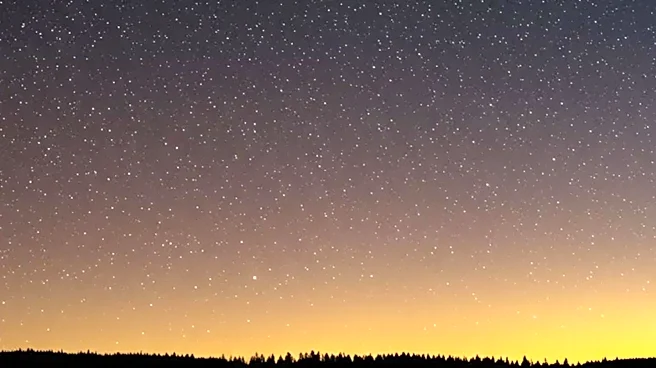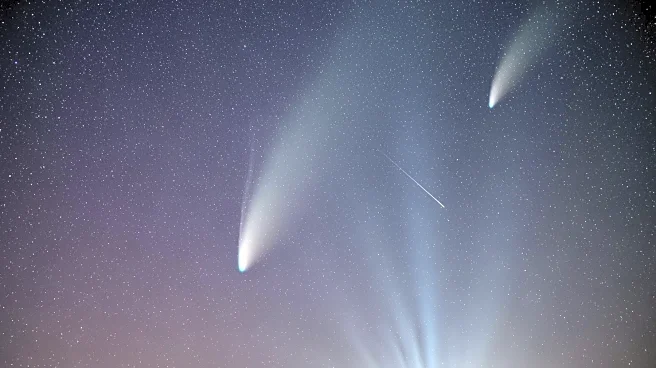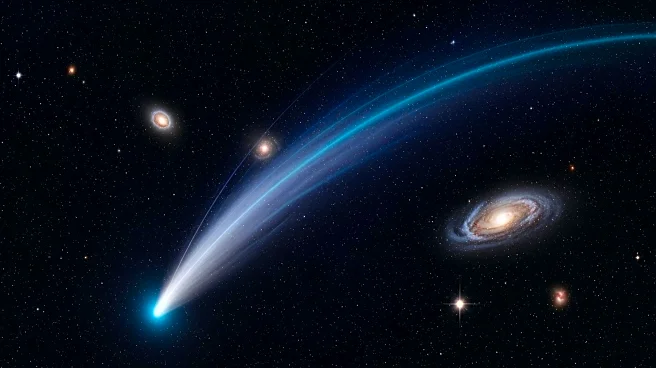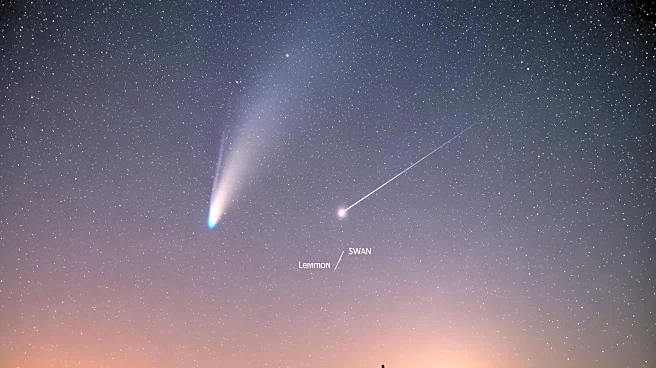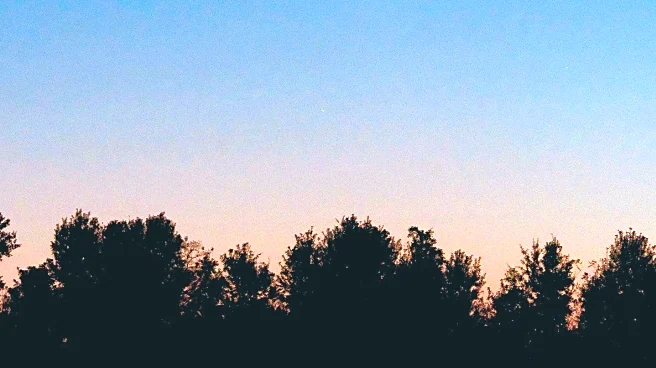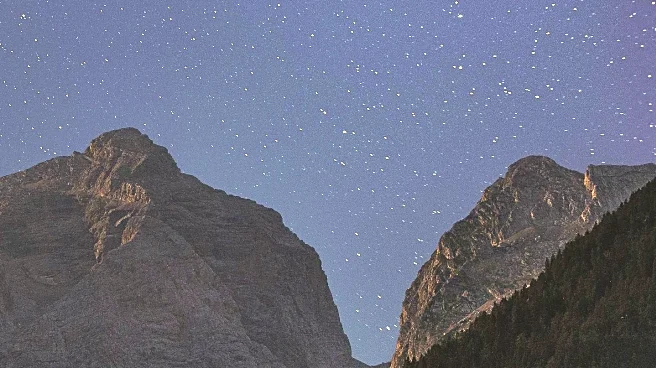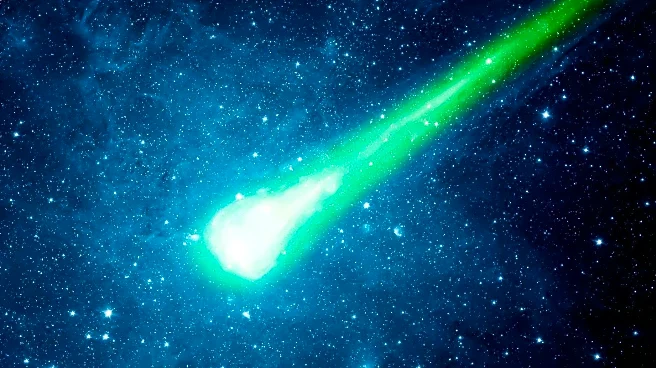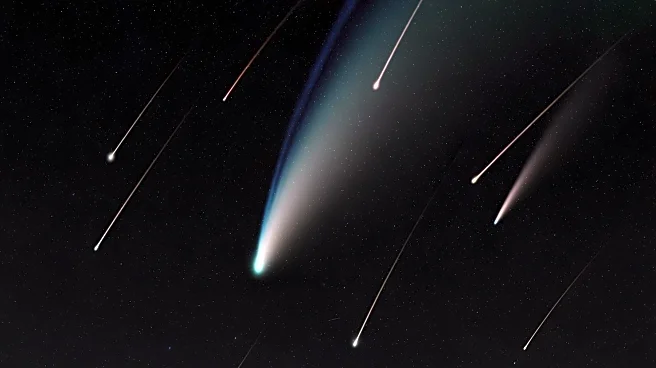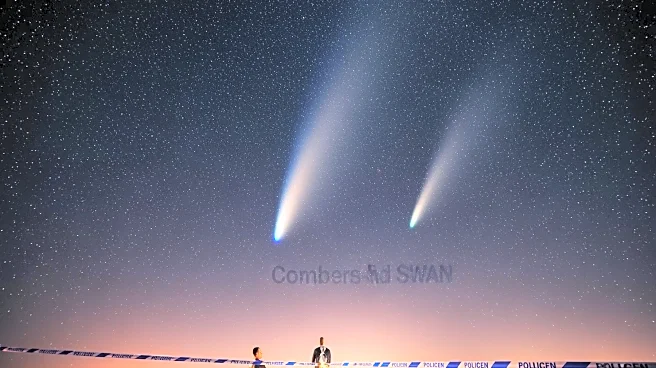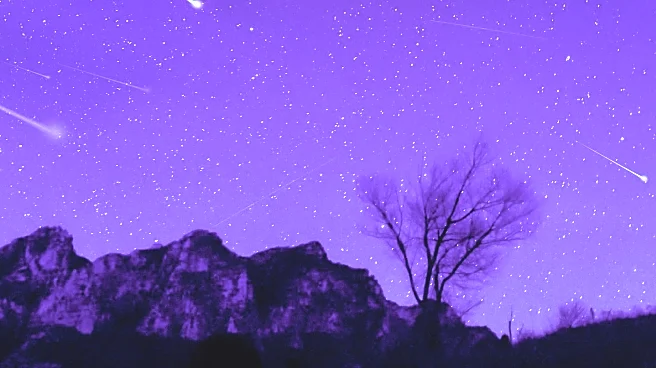What's Happening?
Two comets, Lemmon and Swan, are currently visible in the night sky over Arizona. Comet Lemmon, discovered earlier this year by the Mount Lemmon Survey, is making its closest approach to Earth on October
21 and will reach its closest point to the sun around November 8. This comet is bright enough to be seen with the naked eye under dark sky conditions, appearing as a faint greenish glow with a wispy tail. Comet Swan, although dimmer, can also be observed during this period. For optimal viewing, enthusiasts are advised to head to dark-sky locations away from city lights. The Orionid meteor shower, caused by debris from Halley's Comet, is also visible during this time, adding to the celestial spectacle.
Why It's Important?
The visibility of Comet Lemmon and Comet Swan provides a unique opportunity for astronomers and skywatchers to observe these celestial bodies without the need for advanced equipment. This event highlights the importance of preserving dark-sky areas, which are crucial for astronomical observations. The presence of these comets, along with the Orionid meteor shower, offers educational and recreational opportunities for the public, fostering interest in astronomy and science. It also underscores the significance of ongoing surveys and research in discovering and tracking celestial objects.
What's Next?
Skywatchers can continue to observe Comet Lemmon until it reaches its closest point to the sun on November 8. As the comets move across the sky, enthusiasts are encouraged to use binoculars for a clearer view, especially in areas with light pollution. The Orionid meteor shower will peak between October 21 and 23, providing additional viewing opportunities. Astronomy clubs and educational institutions may organize events to facilitate public viewing and provide information about these celestial phenomena.
Beyond the Headlines
The appearance of Comet Lemmon and Comet Swan serves as a reminder of the dynamic nature of our solar system and the ongoing discoveries made possible by astronomical surveys. It also highlights the cultural and scientific value of skywatching, which can inspire future generations to pursue careers in science and technology. The event may lead to increased advocacy for dark-sky preservation, emphasizing the need to reduce light pollution for better astronomical observations.
